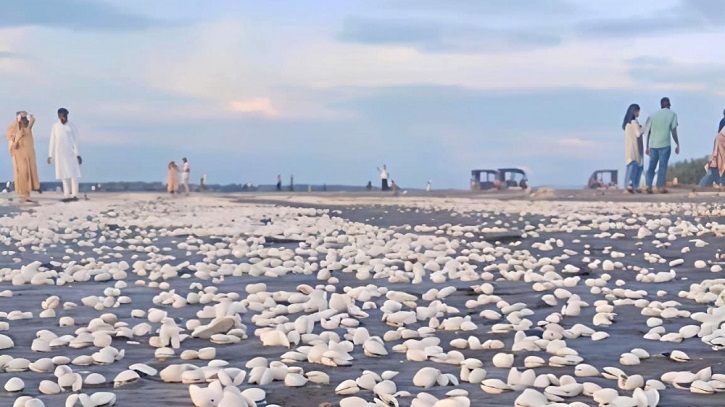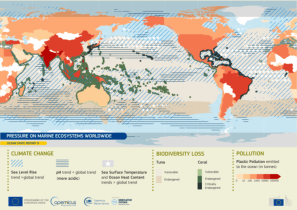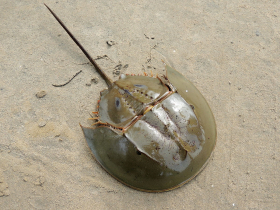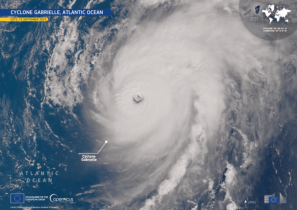
As the cool morning breeze sweeps across Kuakata’s vast shoreline, the blue waves gently touch the edge of the beach, revealing an extraordinary sight. Scattered along the wave-washed sands lie countless seashells, shimmering like jewels under the first rays of sunlight. With the dawn’s glow, these colorful shells sparkle as if the sea itself has draped a necklace of pearls.
On one side stretches the endless sea, on the other, a lush green forest. Between them lies a sandy beach trail where each step feels like walking into nature’s finest exhibition. From a distance, the shoreline resembles an enormous silver-embroidered canvas, and from the early hours, tourists gather to witness this natural wonder. Children run along the surf, excitedly searching for seashells, their faces lighting up when they find one. Young visitors collect them too, some tucking them away as keepsakes, others capturing the moment in photographs. With every new wave, the shells glisten once more, returning to the rhythm of the ocean.
As the day fades into afternoon, the golden light transforms the scenery again. Seashells cease to be mere fragments of nature and become the centerpiece of countless photographs. Tourists pose with shells in their hands, eager to preserve a memory of their trip. For many, a visit to Kuakata feels incomplete without holding a shell before the camera.
When the tide recedes, local women venture onto the beach, gathering shells that, in winter, become a vital source of income. Along the shore, makeshift shops spring up, offering necklaces, earrings, decorative boxes, and showpieces crafted from shells. Visitors purchase these as tangible memories of Kuakata, carrying a piece of the coast back home.
In one such stall, Fatema Begum threads shells into ornaments as she explains how this fragile resource sustains her household. “These shells keep our family going,” she says. “What we earn during the season helps cover many of our expenses.” Yet she acknowledges the dilemma—that constant harvesting could harm the environment. Still, for families like hers, survival cannot simply pause.
Behind the charm of these shells lies a growing concern. Environmentalist Arifur Rahman warns that unchecked collection could threaten Kuakata’s biodiversity. “Enjoy the beauty of the shells, but remember, if we keep exploiting them without restraint, we risk losing a vital part of this ecosystem,” he cautions. Activist K.M. Bachchu, who leads a coastal conservation campaign, echoes the urgency: “Seashells are not just ornaments of the shore, they are the lifeblood of the coast.”
Poet Henry Swapon once described Kuakata’s seashells as fragments of poetry. From dawn to dusk, shells and waves weave a rhythm that lingers long after the tide retreats. Standing at the water’s edge, one feels that the sea speaks not only through waves but also through shells—nature’s finest verses written in rhythm and light.





